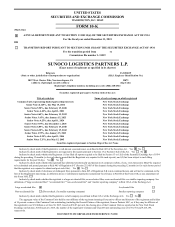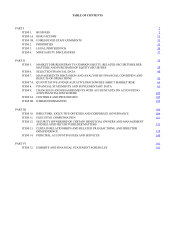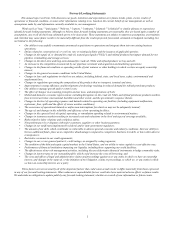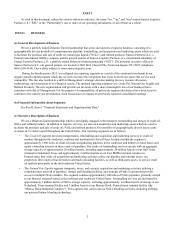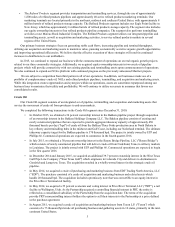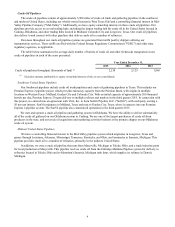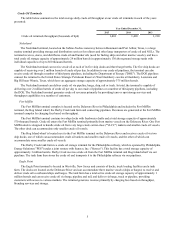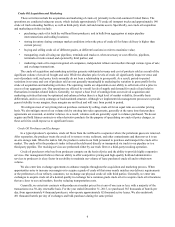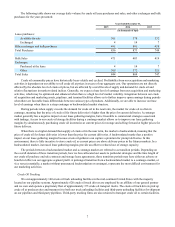Sunoco 2015 Annual Report Download - page 11
Download and view the complete annual report
Please find page 11 of the 2015 Sunoco annual report below. You can navigate through the pages in the report by either clicking on the pages listed below, or by using the keyword search tool below to find specific information within the annual report.9
Marcus Hook Industrial Complex
We acquired the Marcus Hook Industrial Complex from an affiliated entity in the second quarter 2013. The acquisition
included terminalling and storage assets, with a capacity of approximately 3 million barrels of NGL storage capacity in
underground caverns, and related commercial agreements. The facility can receive NGLs via marine vessel, pipeline, truck and
rail, and can deliver via marine vessel, pipeline and truck. In addition to providing NGLs storage and terminalling services to
both affiliates and third-party customers, the Marcus Hook Industrial Complex currently serves as an off-take outlet for our
Mariner East 1 pipeline, and will provide similar off-take capabilities for the Mariner East 2 pipeline when it commences
operations.
Inkster
The Inkster terminal, located near Detroit, Michigan, contains eight salt caverns with a total storage capacity of
approximately 1 million barrels of NGLs. We use the Inkster terminal's storage in connection with our Toledo North pipeline
system and for the storage of NGLs from local producers and a refinery in Western Ohio. The terminal can receive and ship by
pipeline in both directions and has a truck loading and unloading rack.
NGLs Acquisition & Marketing
Our NGLs acquisition and marketing activities include the acquisition, blending, marketing and selling of such products
at our various terminals and third-party facilities. Since the acquisition of our butane blending business in 2010, we have
continued to expand our butane blending service platform by installing our blending technology at certain of our terminals and
third-party facilities, as well as the continued development of the Marcus Hook Industrial Complex. The operating results of
our NGLs acquisition and marketing activities are dependent on our ability to execute sales in excess of the aggregate cost, and
therefore we structure our acquisition and marketing operations to optimize the sources and timing of purchases and minimize
the transportation and storage costs. In order to manage exposure to volatility in the price of NGLs, our policy is to (i) only
purchase products for which sales contracts have been executed or for which ready markets exist, (ii) structure sales contracts
so that price fluctuations do not materially impact the margins earned, and (iii) not acquire and hold physical inventory, futures
contracts or other derivative instruments for the purpose of speculating on commodity price changes. However, we do utilize a
seasonal hedge program involving swaps, futures and other derivative instruments to mitigate the risk associated with
unfavorable market movements in the price of NGLs products. These derivative contracts act as a hedging mechanism against
the volatility of prices.

